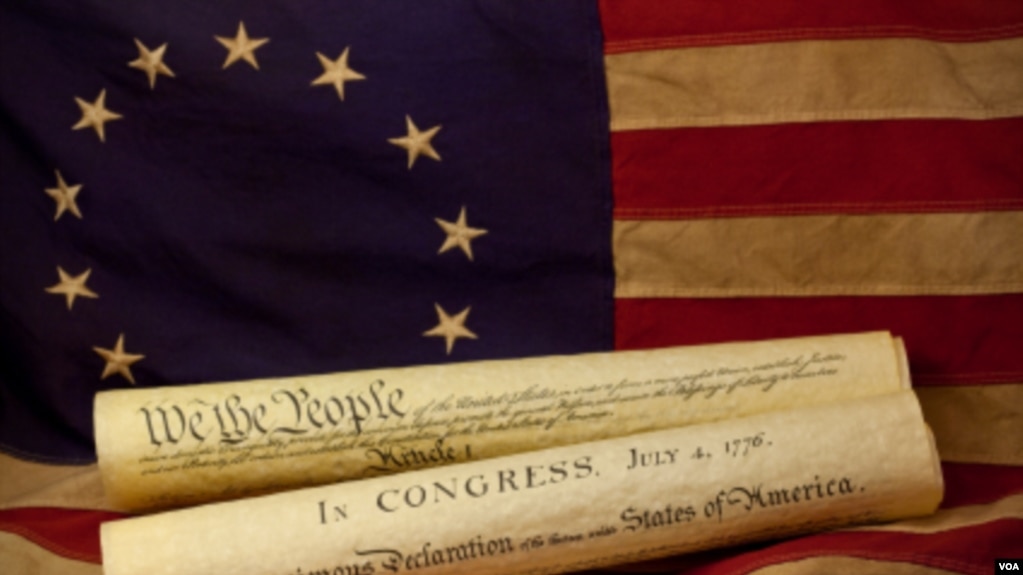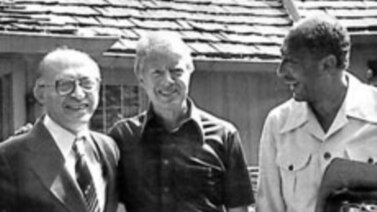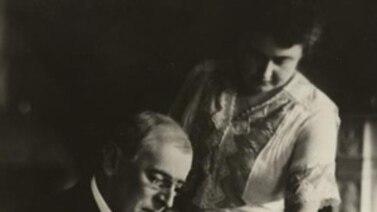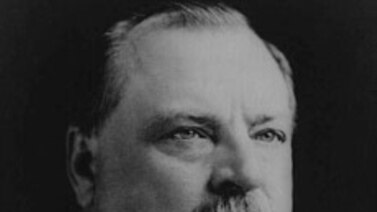
From VOA Learning English, welcome to THE MAKING OF A NATION – American history in Special English. I’m Steve Ember. This week in our series, we continue the story of the United States Constitution.
In May of 1787, a group of America's early leaders met in Philadelphia, Pennsylvania to amend the Articles of Confederation. That document had established a loose union of the 13 states with a weak central government. But instead of amending the articles, the delegates at the convention wrote a completely new constitution.
As we heard last time, one of the issues they discussed was slavery. The existence of slavery affected decisions like how to count the national population. It also affected the powers proposed for Congress.
The delegates at the convention accepted several political compromises on the issue of slavery.
One compromise was the "three-fifths" rule. The population would be counted every ten years to decide how many members each state would have in the House of Representatives in Congress. With the three-fifths rule, the delegates agreed that every five slaves would be counted as three people.
Another compromise would allow states to import slaves until the year 1808. After that, no new slaves would be brought into the country.
Many of the delegates in Philadelphia did not like these compromises. But they knew the compromises would keep the southern states -- where slavery was most widespread -- from leaving the convention.
After all the debates, bitter arguments, and compromises, the delegates were nearing the end of their work. Four months had passed since the convention began. The weather had been hot. Emotions had been hot, too. But that was expected. After all, the men in Philadelphia -- and the delegates were all men -- were deciding the future of their country.
Early in September, the convention appointed five delegates to a Committee of Style. It was their job to write the document containing all the decisions made at the convention. The chairman of the committee was William Samuel Johnson of Connecticut. The other members were Alexander Hamilton of New York, Gouverneur Morris of Pennsylvania, Rufus King of Massachusetts and James Madison of Virginia.
Of these five men, Gouverneur Morris was known for the beauty of his language. So Johnson asked him to write the Constitution.
Here in Washington, visitors to the National Archives can read an original copy of the United States Constitution. Leeann Potter at the National Archives says visitors are often surprised that the document is only four pages long.
“The irony is that the pages are nearly three feet long and about two feet wide. They’re written on parchment. In other words, they’re written on animal skin using an iron gall ink. And this particular document was created in September of 1787.”
The convention approved 23 articles for the Constitution. Gouverneur Morris rewrote them in simpler form, so there were just seven.
“The document itself is divided by article, and each aspect focuses on a different aspect of the American government.”
Article One describes the powers of the Congress. It explains how to count the population for purposes of representation. And it states who can become senators or representatives, and how long they can serve.
Article Two describes the powers of the president. It explains the requirements for the office, and how the president is to be elected.
Article Three describes the powers of the federal judiciary, which includes the Supreme Court and all of the district and circuit courts.
Lee Ann Potter at the National Archives explains.
“That part of our government makes sure that the laws that the legislative branch creates and are being enforced by the executive branch are in fact constitutional. In other words, that the laws they create are legal themselves.”
The first three articles provide a system of checks and balances. The purpose is to prevent any of the three branches of government -- legislative, executive or judicial -- from becoming too powerful.
Article Four explains the rights and duties of the states under the new central government. Article Five provides a system for amending the Constitution. Article Six declares the Constitution to be the highest law of the land. And Article Seven simply says the Constitution will be established when nine states approve it.
The members of the convention wrote a preamble for the Constitution. It began, "We the undersigned delegates of the states of New Hampshire, Massachusetts" and so on. It listed all 13 states by name.
The Committee of Style did not think it was a good idea to list each state. After all, Rhode Island never sent a delegate to Philadelphia. And no one knew for sure if every state would approve the Constitution.
So, Gouverneur Morris wrote instead, "We the People of the United States of America … "
Those simple words solved the problem. But they caused angry debate during the fight to approve the Constitution. They made clear that the power of the central government came not from the states, but directly from the citizens of the nation.
Modern-day Supreme Court Justice Clarence Thomas came from a family descended from slaves. He grew up in the southern state of Georgia. Justice Thomas recalled having to memorize the opening statement to the Constitution when he was a child.
THOMAS: “I always think it’s so fascinating to think of these black kids in a segregated school in Savannah reciting the Preamble to the Constitution of the United States. What did we believe? I mean, everything so obviously in front of you is wrong. You can’t go to the public library. You can’t live in certain neighborhoods. You can’t go to certain schools. But despite of all that, you lived in an environment of people who said it was still our birthright to be included.”
The rest of the preamble says why the Constitution was written.
" … in Order to form a more perfect Union, establish Justice, insure domestic Tranquility, provide for the common defense, promote the general Welfare, and secure the Blessings of Liberty to ourselves and our Posterity, do ordain and establish this Constitution for the United States of America."
The next step was to sign the document.
On September 17, the delegates gathered for the last time. One might think all of their business finally was done. But Nathaniel Gorham of Massachusetts rose to speak.
If it was not too late, he said, he would like to make a change. Instead of electing one representative for every 40,000 people, as agreed, he suggested changing the number to 30,000.
Gorham's proposal could have caused a bitter argument. Then, suddenly, George Washington, the president of the convention, stood up. The delegates were surprised. He had said little all summer.
Now, George Washington rose to express his support for the proposed change. He said it would guarantee a greater voice in the government for the people of the nation.
Every delegate agreed to the change, which would mean a larger number of representatives in Congress.
Finally, it was time to sign the Constitution. It was also the last chance to speak against it. Many delegates stated their objections to different parts of the document. In the end, most of the delegates declared that for the good of the nation they would sign it.
Several, however, refused to put their name on the Constitution.
Edmund Randolph of Virginia and Elbridge Gerry of Massachusetts said they could not sign the document. They believed it would not beapproved by the states. And that, Gerry said, would lead to civil war.
George Mason of Virginia also refused to sign. He had several reasons, but his first objection was that the document did not guarantee enough liberties. "There is no declaration of any kind, for preserving the liberty of the press, or the trial by jury in civil causes; nor against the danger of standing armies in time of peace." Mason wanted to add a “Declaration of Rights.”
Randolph, Gerry and Mason were the only delegates present in Philadelphia who did not sign the Constitution.
Four other delegates who opposed it went home before the signing. So did nine delegates who supported the Constitution but went home early.
Few of the delegates in Philadelphia could feel sure that enough states would approve the Constitution to make it the law of the land. As several of them said later, they wrote it the best they could.
Without it, the young nation would break apart before it even had a chance to succeed. If future generations did not like the Constitution, it offered ways for them to change it. Here is George Washington played by an actor.
“I’m a practical man. I hope for the best, but I plan for the worst. And that’s what this document does.”
Yet the struggle to create the Constitution had just begun. Writing it took four months. Ratifying it took more than twice as long. The process of getting the new Constitution approved will be our story next week.
I'm Steve Ember, inviting you to join us again next week here at VOA Learning English for THE MAKING OF A NATION -- American history in VOA Special English.




